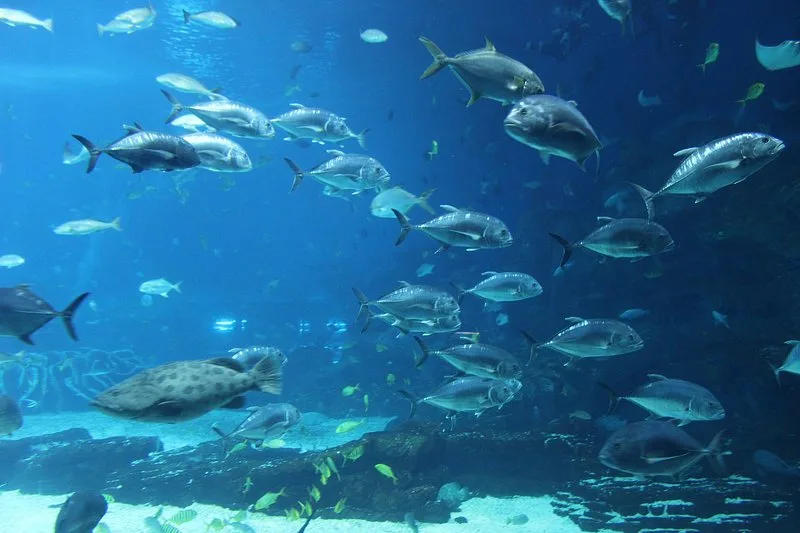Researchers at UCLA have developed a powerful new scientific model that links global fisheries and climate change to the ocean’s ability to capture and store carbon. Professor Daniele Bianchi and researcher Jérôme Guiet, from the department of Atmospheric and Oceanic Sciences, were part of a global collaboration on the important new study.
Published this week in Nature Communications, the work uses a global fish-biomass simulation tool to explore how marine life contributes to nature‐based climate solutions.
“By knowing the food supply, water temperature and metabolic cycles of marine organisms, we can track how energy propagates from small creatures up to larger fish,” explains Professor Bianchi. That theoretical foundation has enabled the UCLA team to embed real-world catch data and global observations into a model that assesses fish biomass and its role in the carbon cycle.
Fish and other large organisms are an integral part of that system and they help regulate the planet’s climate.” – Daniele Bianchi
In the ocean’s carbon cycle, marine organisms act as both movers and storers of carbon. Tiny plankton absorb carbon dioxide during photosynthesis, forming the base of the marine food web. As these organisms are consumed by larger species, the carbon moves up the food chain and is eventually carried to deeper waters when fish excrete waste, die, and sink to the ocean floor. There, much of the carbon remains trapped for centuries to millennia. “The ocean’s biological pump is one of the most effective carbon-storage mechanisms on Earth,” said Bianchi. “Fish and other large organisms are an integral part of that system and they help regulate the planet’s climate.”
The model began more than a decade ago when Bianchi, working as a postdoctoral researcher, initiated the tool. “We realised ten years ago that although we know how much fish we catch, we don’t even know how many fish are in the ocean,” Guiet observed. The researchers estimate a pristine-state biomass of approximately 6.9 Gt (gigatonnes) of marine animals larger than one gram — roughly twenty times the estimated biomass of humans.
The work, produced in collaboration with international teams including the University of Montpellier in France, the Sasakawa Global Ocean Institute in Sweden, and UC Santa Barbara, finds that the deep-sea sinking of fish carcasses and fecal matter contributes meaningfully to long-term carbon sequestration. The research shows that commercial fishing has diminished this process. “Every time fishing reduces fish biomass by 1%, their carbon sequestration decreases by about 0.8%,” the team reports. As fish populations decline, so too does the amount of carbon transported to the deep ocean. In other words, a decline in fish directly impacts climate change.
And that is a serious threat. The researchers project that if global warming reaches 4.3 °C, the ability of ocean life to sequester carbon could decline by as much as 13.5% relative to a modest 3.5% decline for a 1.5 °C warming scenario. Combining the impacts of both fishing and warming could reduce sequestration by up to 56% by the end of the century compared to mid-20th century levels.
“This is the first time someone has connected and projected the value of fisheries to carbon sequestration in a quantitative way,” says Guiet. The implications are clear — ocean management and sustainable fisheries may need to play a more visible role in climate policy.
Now, Bianchi and Guiet plan to continue refining their model through more collaborations. “A single model is not always the most accurate,” he says. “It is only by assembling many models and collaborating globally that we will be able to build confidence in these assessments.”
 Photo credit: rawpixel
Photo credit: rawpixel